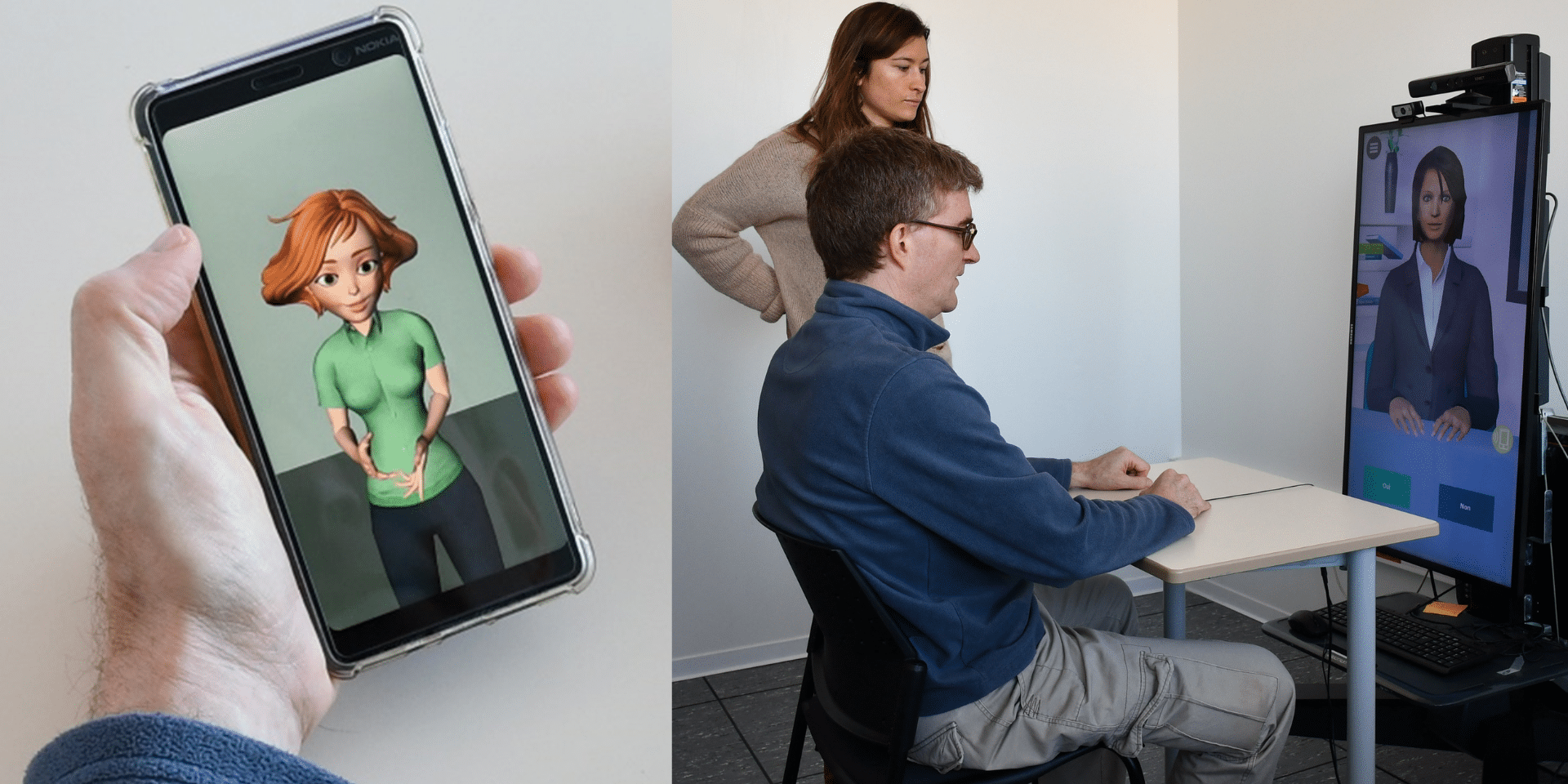Health, behaviors and autonomous digital technologies
Coordinating Partner : Pierre Philip
Coordinating institution : Bordeaux University
Sleep, mental disorders, voice, embodied conversational agents, autonomous digital phenotyping, d-CBT, precision medicine
Western populations face an increase of longevity which mechanically increases the number of chronic disease patients to manage. Current healthcare strategies will not allow to maintain a high level of care with a controlled cost in the future and E health can optimize the management and costs of our health care systems. Healthy behaviors contribute to prevention and optimization of chronic diseases management, but their implementation is still a major challenge. Digital technologies could help their implementation through numeric behavioral medicine programs to be developed in complement (and not substitution) to the existing care in order to focus human interventions on the most severe cases demanding medical interventions. However, to do so, we need to develop digital technologies which should be:
- Ecological (related to real-life and real-time behavior of individuals and to social/environmental constraints);
- Preventive (from healthy subjects to patients);
- Personalized (at initiation and adapted over the course of treatment) ;
- Longitudinal (implemented over long periods of time) ;
- Interoperated (multiscale, multimodal and high-frequency);
- Highly acceptable (protecting users’ privacy and generating trustability).
The above-mentioned challenges will be disentangled with the following specific goals:
Goal 1: Implement large-scale diagnostic evaluations (clinical and biomarkers) and behavioral interventions (physical activities, sleep hygiene, nutrition, therapeutic education, cognitive behavioral therapies…) on healthy subjects and chronic disease patients. This will require new autonomous digital technologies (i.e., virtual Socially Interactive Agents SIAs, smartphones, wearable sensors).
Goal 2: Optimize clinical phenotyping by collecting and analyzing nonintrusive data (i.e., voice, geolocation, body motion, smartphone footprints…) which will potentially complement clinical data and biomarkers data from patient cohorts.
Goal 3: Better understand psychological, economical, and socio-cultural factors driving acceptance and engagement with the autonomous digital technologies and the proposed numeric behavioral interventions.
Goal 4: Improve interaction modalities of digital technologies to personalize and optimize long-term engagement of users.
Goal 5: Organize large scale data collection, storage, and interoperability with existing and new data sets (i.e., biobanks, hospital patient cohorts and epidemiological cohorts) to generate future multidimensional predictive models for diagnosis and treatment.
Each goal will be addressed by expert teams through complementary work-packages developed sequentially or in parallel. A first modeling phase (based on experimental development and testing) will be performed through this project. A second phase funded via ANR calls will allow to recruit new teams for large scale testing phase.
This project will rely on population-based interventions in existing numeric cohorts (i.e., KANOPEE) where virtual agents interact with patients at home on a regular basis. Pilot hospital departments will also be involved for data management supervised by information and decision systems coordinating autonomous digital Cognitive Behavioral interventions based on our SIA.
The global solution based on empathic Human-Computer Interactions will help targeting, diagnose and treat subjects suffering from dysfunctional behavioral (i.e., sleep deprivation, substance use…) but also sleep and mental disorders. The expected benefits from such a solution will be an increased adherence to treatment, a strong self-empowerment to improve autonomy and finally a reduction of long-term risks for the subjects and patients using this system.
Our program should massively improve healthcare systems and allow strong technological transfer to information systems / digital health companies and the pharma industry.
| Laboratory or department, team | Supervisors |
| Sanpsy UMR 6033 | CNRS, Bordeaux University |
| ISIR – UMR7222
Eq PIRoS |
CNRS, Sorbonne University |
| CES – UMR8174 | CNRS, Paris 1 – Panthéon Sorbonne University, Ecole d’Economie de Paris (PSE) |
| LORIA – UMR7503 | CNRS, Inria, Lorraine University
Central Supelec partner |
| LaBRI – UMR5800 | CNRS, Bordeaux University, INP
Inria partner |
| LIRIS – UMR5205 | CNRS, Ecole Centrale Lyon, INSA Lyon, Lyon 1 University, Lyon 2 University |


